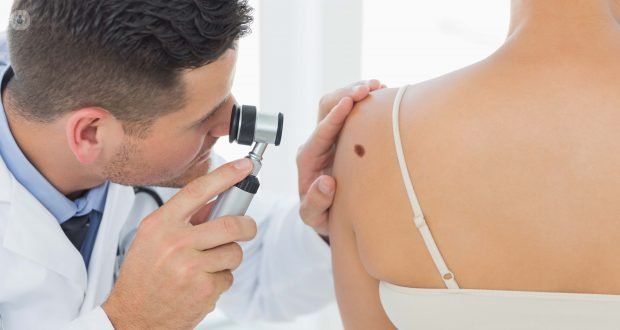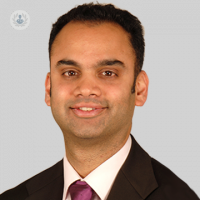What different skin cancer treatments are there?
Autore:There are many different types of skin cancer. Its treatment will depend on the various factors which determine the aggressiveness of the cancer, such as the type of tumour and its location on the body.
Thankfully, with early detection and correct treatment, most cancers can be effectively cured. Nowadays, we have many methods. For less serious types, non-surgical treatments such as creams may work, while other cases require surgery.
Dr Raj Mallipeddi, award-winning consultant dermatological surgeon based in London, sheds light on these methods...

Photodynamic therapy
A cream is applied to the affected area, which is then covered with a dressing. After three hours, the dressing is removed and a special light is shone onto the area for around nine minutes. The aim is to destroy the abnormal cells through a chemical reaction while leaving the normal skin intact. The treatment is usually repeated twice, between one and two weeks apart to increase the chance of success. Although there is some discomfort during the procedure due to the heat caused by the reaction, the area normally heals quickly.
Surgical removal
This method is standard practice for most skin cancers. The cancer is removed along with an area of surrounding skin, as there are often tumour cells that cannot be detected with the naked eye, and this increases the chances of complete removal. For melanoma, early surgical removal remains the most effective treatment, although the outcome will depend on a variety of factors, including pathological features such as the thickness of the tumour and whether it has spread to the lymph nodes.
Mohs micrographic surgery
For certain higher risk tumours on the head, Mohs micrographic surgery can be advantageous. It is a precise method of tumour removal involving taking narrow margins of normal skin and mapping the tissue. It is then processed in a special way using horizontal sections allowing the entire margin to be examined. Results are often available within an hour. The Mohs surgeon then analyses the pathology under the microscope to pinpoint where further skin removal is required. This method may reduce the risk of scarring by preserving normal tissue and, in addition lowers the risk of leaving a tumour behind, as the roots are microscopically-traced. For this reason, when applied to appropriate tumours (most commonly, basal cell carcinoma) Mohs surgery has a 99% cure rate.
Radiotherapy treatment for skin cancer
Radiotherapy is an option for when surgery is not appropriate. Radiation is applied to the tumour and destroys the cancer cells by damaging the DNA inside. The problem is that radiation cannot distinguish between normal cells and cancerous cells, so both are affected. However, normal cells are more likely to recover from the damage caused by the procedure. Multiple visits to the hospital are necessary, and the total treatment course can take at least 3 weeks to complete.
Novel treatments for melanoma
Unfortunately, there is still no cure once a melanoma has spread (melanoma metastasis) beyond the skin, however, on-going research continues to search for novel treatments. This includes molecules which block mutations, vaccine therapy which stimulates the body’s immune system allowing it to recognise and attack melanoma cells, and gene therapy which aims to replace the damaged genes in melanoma cells with normal ones. In the future, treatment may be tailored to an individual cancer “gene signature” based on gene expression analysis.
If you require expert diagnosis and treatment for skin cancer, don't hesitate to book an appointment with Dr Raj Mallipeddi via his Top Doctors profile today.

